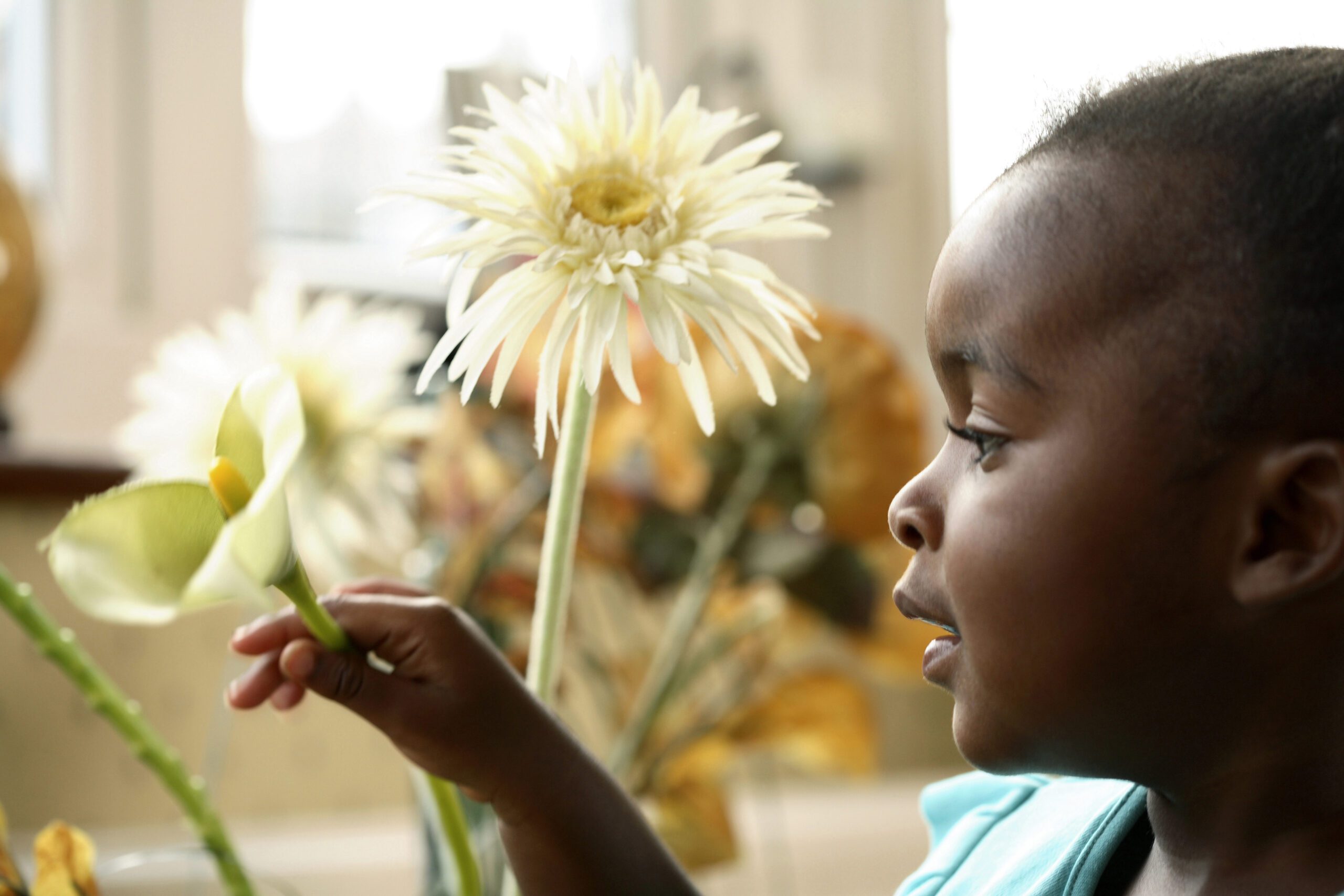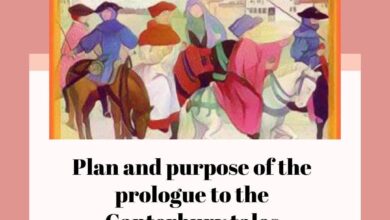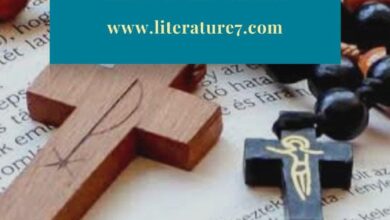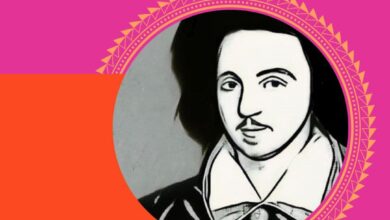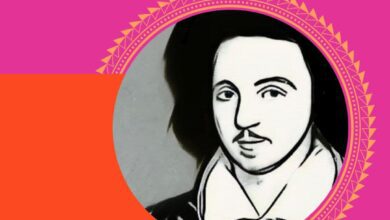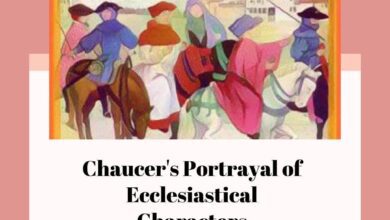Critical appreciation of ode on intimations of immortality

Ode on Intimations of Immortality can be described as among the most famous poems written by William Wordsworth. One of the most important aspects to understanding Wordsworth’s feelings about childhood as a condition of grace and its relationship to the mature perspective of man is to understand the immortality ode that is widely regarded as the pinnacle of his poetry along with Tintern Abbey.
The core of ode on intimations of immortality, according to Alec King, is a dual vision of childhood: the kind of childhood we can see as being lived by children and which each one of us goes through, as well as the childhood that we carry in us as memories, and that is rooted in our early days, is carried with us through adulthood in good or bad ways.
Two Childhoods (Ode on Intimations of Immortality)
These two types of childhoods are described as, for convenience, visible childhood and invisible childhood. Wordsworth can distinguish these two childhoods not only by the things he writes about both but also by the use of different dialects. The visible childhood of “six years’ Darling of a pigmy size” is lived freely and bustling for us, in the truthful words that is the seventh stanza through the imitation of the tiny actor. The invisibility of childhood is alluded to, as it should be, using metaphor and myth, particularly in the eighth stanza with children’s names like “thou best philosopher,” “thou eye among the blind.”
Myth of Pre-Existence
It was for the purpose of understanding the mystery of childhood invisibly that Wordsworth invented “pre-existence” as a myth. The soul’s journey into human existence begins when we are born as an event in its eternal life. It is forced to flee temporarily from its home in heaven, yet in its early years, it doesn’t forget its home or the divine light that is the source of its light. The world will gradually become a dark cloud, and the light will fade.
The flat version in the 5th stanza offers the basic structure of the image and its narrative structure. The beauty and power of the picture are because we see this process, not just from the outside but rather from the inside. It is precisely this aspect that allows us to be aware of the relationship to our lives and the eternality of our souls.
The soul’s light which we inherit, is reflected in everything that we perceive. The delight of childhood is a “strain of the earth’s sweetness at the start in the Eden gardens.” Only the compulsion to reach human maturity reduces and obscures this divine magnitude. We become the darkness of our existence as we mature, and the dazzling light of the dawn of human existence that reveals everything for our newly awakened eyes gradually transformed by us into a normal light that illuminates objects.
Read also Lord Byron as a Romantic Poet
The Dilemma of Incarnation
In this verse, Wordsworth presents to us the problem of human existence in all its forms, that life’s gift is a mystery to the material and living form of its manifestation.
The particular “juice and delight” of springtime purity and innocence that is our right as a child is also the force that draws us away from the heavenly realm of the ethereal childhood. Youth must go on a journey. This is the reason it is that, as Wordsworth shows us in the following stanza, earth as mother earth must ensure that the soul, the life we have been given to us, feel at home not because of the total splendour in life or its eternal origin is something that she doesn’t recognize or wish to experience and not because her child must experience the imperial world as it is that is embodied in the elements of nature.
However, there is within the poem, an unusual Wordsworthian affection for nature as if he wanted to express what every artist feels in the course of dealing with the nature of their work-a joy in feeling at home, being surrounded by the world’s enclosing majesty and its strongness, not exposed to the glare of splendour.
In these two lines, Wordsworth has effectively incarnated the soul of the world in its earthly attire. The poet has put together both the invisibly and the visible child of man, as they have to be in harmony. In the next stanza, he completely turns to the child in the world and speaks in a tone of ironic and loving realism. The child has to go into the world of human practice, acting as a tiny actor in his upcoming roles and imitating what he observes.
See also Critical appreciation of william hazlitt essay On Nicknames
In the next stanza, Wordsworth speaks of the mystery of this modern life, which is awash by absorbing attention. Yet, it carries with the middle of it an undiscovered blessing and a state of being not being noticed and never praised and which is “the fountain light of all our day” and the master light of all our perception’. The truth of this enigmatizing paradox is revealed through the language from myths and metaphors. With a stunning, imaginative certainty, particularly in the manner, we are held by the poets as well as in the lives of the child. Over it, in remembrance of our peak of adulthood, the unobserved childhood was ours and which we never wanted.
The names of the Child-Philosopher Prophet, Seer are deliberately infuriating to our perception when we consider the child who is visible and his struggle to conquer the size of his pygmy body and powerlessness and skill, his yearning for and the inevitable realization that what we all come across it is a burden.
The names, however, because of their un-childlike sound, reveal the significance of what was given the gift of the new life of a creature and of what we’ve been battling all our lives to discover” and of what we try always to remember: the vastness of grace, the absoluteness of being, whose power and freedom only become apparent after having lost the initial innocence, which is its main channel.
The Child as Symbol
Human beings are not able to fully resolve this issue from a personal perspective; as a young person will find the weaknesses of his apparent childhood unpalatable when attempting to become mature; and the force of his invisible childhood (the immortality of the life within his soul) is always dispersed and altered through his efforts, and by the “weight of the custom” that is as heavy as the front, and by all the pre-planned responses and taught gestures that are the basis of the ego of the person is strengthened.
But the ultimate wisdom of the human experience has been recognized as rooted in the qualities associated with the “child” as a symbol in self-respecting submission to the world around us as well as the selfless, unselfish surrender of oneself as a naked display of nerves, the open acceptance of innocence, which is refreshing because it is the imaginative self-identity that has been cleansed of all creating egotism and the universal love for life that is so intense and active that it can be best described as a divine hunger.
“The “child’s” view is not distorted by the use of language to explain things and is an undiluted representation of the single existence, both inside and outside before the self-conscious desire to establish a space for himself through speech and action has risen. He is still unassociated from the world but is still unaware of his existence, which must be so carefully constructed.
How do you keep that “child” within oneself, and to keep that it is a perpetually current state of being, as our personal immortality, to hold it within us regardless of how we are dragging and pushing our own visible childhood through the guidance and guidance of our parents into the expected patterns of adulthood?-this is the question that the poem poses and is what it asks. It isn’t answered in the precept. The vulnerability and dependence that a “child” is their strength because it is a part of his desire to be taken care of by the things that satisfy him in life.
We attempt to break through this dependence and weakness as swiftly as we can because we want to be able to stand on our own. There is no escaping the severe sufferings we bring on our bodies to experience the inevitable burden; Wordsworth’s wisdom was so profound that he recognized the fact that we need to remember our invisible childhood as we get older as we are unable to keep it in the past, and the most intriguing thing about the childhood years is that you don’t be aware of the blessing that we were given until we can remember it once it’s gone missing and when we remember it we recreate our lives.
We create ourselves with imagination and memory. We experience the invisibility of childhood is actually not in itself but rather as a glimpse into divine maturation. The young-hearted maturation that is “Saint” has always been a source of criticism for our childishness and attempts to substitute it by sophistication.
Read also William Blake songs of innocence and of experience analysis
After we’ve grown by our lives, we should be wise to look at the inexplicable beauty of our personal life or reflect on it in the mists of years of longing, but instead, examine it once more, and to cherish it more than when we were a part of it as a child. Because the existence and significance of our unnoticed childhood are for our egotistical zeal, it is something unique and amazing; a sort of rebirth that is only temporary and in which normally overlooked things can be the means that we experience the depth and the beauty of the world we belong to.
Nature as “Homely Nurse”
The entire stanzas IX and X lead us to this stage. Wordsworth explores the mystery of the process in stanza IX. Our invisibility is “fugitive,” and it fades from the earth, but is an endless possibility, just as light that has been sucked out in a fire remains to be born from the ashes. Light does not arise from embers at its own will but instead through a breath of air from the outside. It is not us but nature that recollects the things that were so mysterious.
Wordsworth’s faith lies in nature, which has been described as a homely nurse. He believes in her to sustain in us our eternal childhood through her unique method of showing us through her images of material things the light that was never in the land or at sea’. Wordsworth is genuine and true to his own thoughts in his perception of this work of nature. Our childhood in the visible world is filled with joy and activity, liberty and hope.
The transformation of objects under the illumination of the mind that the natural world encourages is experienced by the visible child with bewilderment and doubt. The disappearing and falling to “thought” from the physical reality, as well as the feeling that the thing he’s looking towards is now insubstantial becoming a part of his mind, and that as Wordsworth, the young Wordsworth himself, he grabs trees or walls to bring himself back to the earth. This can trigger certain anxiety, but it’s, in reality, an element of the power of the invisible child and the “seer blest (blessed).” It becomes, for the mind of the artist, the entire nature of his vision.
Child: The “Seer Blest”
It’s very inspiring to witness how, through drawings and paintings, children truly overcome the problem of wanting to comprehend a vast world and yet painting their dreams as a sense of it. The typical illustration of a child is full of forms that exhibit the solidity and sharpness of real objects. When one comes into them, and they’re amazing discoveries of the lives of objects. The entire painting is dominated by an inward vision, dark recollections, and thoughts, which guide work as the whole with a sense of naivety.
Children paints just like real artists. They create lumps of matter to fill the space, and an inner view guides their creative process that simultaneously makes each line and blots an expression of their lives. This authentic origin of their art can make the semblance of skilful but second-rate artists appear dull. Children’s art isn’t exceptional art, not just because they aren’t technically skilled and naive, but simply because they are caught up in the paradox Wordsworth is able to define for us in his Ode. A mature painter will eventually lose the “freshness of a dream” that frequently awes us when we see a child’s work.
Check out Contribution of university wits in english literature
The child paints the surroundings and himself using fresh but sloppy gestures. There is not within his eyes and to unleash the full force of his immortal, invisible childhood, as he is distancing himself from it. The child is not just absconding from it, and he has not learned to use it in the face of the inexplicably difficult experience that maturity is a source of. The mature art-maker, who is no longer a child-like in reality, understands and embraces this innocent visionary power in all its fullness as he focuses on it in the chaos of daily life because it is a special power that allows him to look into the ‘life that is the universe.
Wordsworth was able to comprehend that as an artist, even though it is true that the child is the father to the man and leaves his wealth and wealth to man, it is an adult who is aware of the value of wealth and how it could be used to be the master shining light in all his sightings’. Nothing is more striking when you look at the paintings of a master (leaving aside any pleasure of a skilful method) than the fact that in which it retains in its own the paradox of the poem: the honesty and directness of its child-like gaze and the awe-inspiring mature splendour of what it’s “looking towards.”
The greatest painter is “eye within the blind” or the term used to describe a “seer blessed” and one “haunted by the immortal mind” He is aware that this ability to see is granted only when he is not engaged in a task of a practical nature such as dubbing, chiselling, changing words to an order that is tuneable so that his “soul’s immenseness” can find its true language that is not shattered by unkind expressions of self-congratulation.
The greatest artwork is thick with a potentially irreparable life that has been transformed into a state of calm and order. Its beauty and beauty are incredibly exhilarating. The child’s perception of his art is astonishingly fluid, even when his pictures are horrifying like they can be since he lives in a world that is entirely void of anything other than the simple movement of living things and the imagining of his relationship with the living things.
The mystery of Eden is never easy to grasp because the children who live there don’t even think they’d like it and constantly try to get out. At the same time, those who fantasize about its blissful pleasures suffer because of human fatigue and disorientation. It was logical Milton did not give us first the image of a paradise on earth; rather, to begin by building into our minds the realms of heaven and hell as well as the tension between good and evil, which creates Paradise all its significance as a place where all the vital forces that exist in the world, Adam and Eve, in their unfallen state, could have drawn images of children.
After their expulsion, they discovered the horrific energy of God that they had lost and were trying to recover once more.
Intimations of Immortality
Wordsworth’s Ode should have been able to start at this position. The initial impressions of immortality begin with our first encounter with the eternal universe, not just as escape or transcendence, but as a real-world transformed, the world where “the most powerful symbolism of the soul is the everyday reality. However, no one can stay in this world as a child as it is a result of our human innocence life, an expression of the unrestrained, undisciplined willingness to let the universal life force flow, even before any need to shield, protect and secure the self-conscious the ego.
It is impossible to stay in our world of the beginning as we would like to. The most potent paradox so clearly revealed in the Ode is that the wisdom of life pulls children to move away from their innocence and into higher and more incredible beauty if they can. The man in the first section in the poem who grieves for being denied the perpetual spring celebration of childhood has also excluded himself, not because he feels abandoned, but by doing so enthusiastically (as in the 7th stanza shows) and the more eagerly, the more active and creative his life.
The child who is turning away from the eternal unity of existence in which he was born is a result of the determination, not just the child’s, but that of life’s because he has to face the chaos, confusion, and violence of life and its ecstasy. He is not trying to be defeated by them, unite them, and make them more complicated and more expansive than anything a child can imagine. God could say, intentionally pushes a man away from Eden to ensure to let the man work on the unstructured chaos of the outside and bring it back if he is able, back in this garden, to be redeemed.
